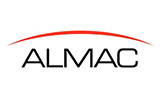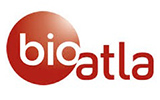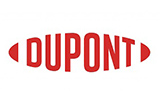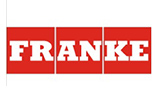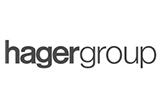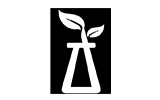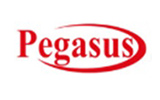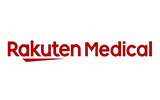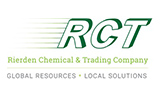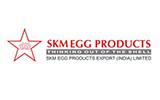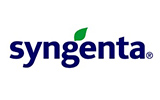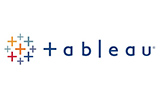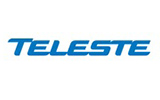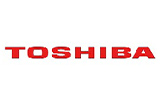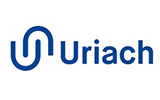
Report Overview
The growing demand for 3D printers in major industries like aerospace, automotive, healthcare, and manufacturing, the government?s supportive initiatives and investments in advanced technologies, and rising adoption of 3D printing for rapid prototyping and cost reduction are expected to drive Saudi Arabia 3D Printing Market during the forecast period between 2025 and 2033.
Saudi Arabia 3D Printing Market - Industry Trends & Forecast Report, 2033
Saudi Arabia 3D Printing Market size was estimated at USD 398.1 million in 2024. During the forecast period between 2025 and 2033, Saudi Arabia 3D Printing Market size is projected to grow at a CAGR of 23.4% reaching a value of USD 1,706.9 million by 2033. Prominent drivers of the market include increasing government support, strategic partnerships, and advancements in healthcare applications. The Saudi government is fostering market growth by promoting research and development (R&D) in 3D printing and offering financial incentives, creating a favorable environment for innovation. The healthcare sector significantly benefits from 3D printing, with applications in customized prosthetics, surgical tools, and anatomical models. Strategic collaborations between local and international firms are driving technology adoption, while the aerospace sector leverages 3D printing for aircraft components and UAVs. Additionally, the rise of 3D printing service providers is enabling small and medium enterprises (SMEs) to access advanced technology without substantial capital investments, further supporting market expansion.
Saudi Arabia 3D Printing Market
3D Printing - Overview
3D printing, or additive manufacturing, is an innovative technology that creates three-dimensional objects layer by layer using digital models from CAD files. It employs materials like plastics, metals, ceramics, and organic compounds, depending on the printer and application. Methods such as fused deposition modeling (FDM), stereolithography (SLA), and selective laser sintering (SLS) enable rapid prototyping, reducing costs and development time. The 3D printing technology supports customization, intricate designs, and tailored solutions while minimizing material waste. Beyond manufacturing, it enhances STEM education with tangible models and empowers artists to craft unique and complex creations, pushing the boundaries of design and functionality.
Saudi Arabia 3D Printing Market
Growth Drivers
Government?s Initiatives and Increasing Investments in Advanced Technologies
Saudi Arabia is rapidly embracing additive manufacturing (AM) as a key driver of its technological and economic transformation, supported by robust government initiatives and substantial investments. Under Vision 2030 and the National Industrial Development and Logistics Program (NIDLP), the country aims to diversify its economy, reduce oil dependency, and establish itself as a global leader in advanced manufacturing. The National Additive Manufacturing Strategy promotes innovations, localizes AM technologies, and fosters the development of an AM-skilled workforce. Significant investments include NAMI?s state-of-the-art AM facility and Immensa Technology Labs' advanced manufacturing center, showcasing the Kingdom?s commitment to integrating cutting-edge technologies. Collaborative efforts with global organizations and institutions such as King Abdullah University of Science and Technology (KAUST) and King Fahd University of Petroleum and Minerals (KFUPM) drive research, materials development, and innovation in AM. Partnerships, like those between 3D Systems and Dussur, aim to expand AM adoption in Saudi Arabia and the broader Middle East. These initiatives position Saudi Arabia as a hub for advanced manufacturing and support its goal of creating a knowledge-based, diversified economy.
Challenges
High Initial Investment Requirements
High initial investment costs for 3D printing equipment and infrastructure pose a significant challenge to the growth of Saudi Arabia 3D Printing Market. Establishing 3D printing capabilities requires substantial capital outlay, including the purchase of advanced printers, setup of facilities, and ongoing maintenance. According to an estimate, setting up a 3D printing lab or production facility can cost approximately USD 15 million, making it financially prohibitive for small and medium enterprises. Additionally, expenses related to material procurement and software further increase the economic burden. As a result, the adoption of 3D printing remains limited to well-funded government projects and large corporations, hindering its widespread application and market expansion.
Impact of Escalating Geopolitical Tensions on Saudi Arabia 3D Printing Market
Escalating geopolitical tensions can significantly impact Saudi Arabia's 3D Printing Market. Rising uncertainties disrupt global supply chains, leading to delays in importing essential 3D printing materials and equipment. These disruptions increase costs, affecting the feasibility of projects and slowing technological adoption. Additionally, geopolitical challenges may deter foreign investments and collaborations, which are crucial for fostering innovation in additive manufacturing. Strained diplomatic relations can also hinder knowledge sharing and access to advanced technologies from international markets. Moreover, fluctuating oil prices due to geopolitical unrest can influence government spending on advanced technologies like 3D printing. As Saudi Arabia aims to diversify its economy, navigating these geopolitical complexities is essential to ensure the market's sustained growth.
Saudi Arabia 3D Printing Market
Segmental Coverage
Saudi Arabia 3D Printing Market - By Technology
Based on technology, Saudi Arabia 3D Printing Market is divided into Stereo Lithography, Fused Deposition Modelling (FDM), Selective Laser Sintering, Electron Beam Melting, Digital Light Processing, and other technologies segments. The fused deposition modelling segment holds the highest share in Saudi Arabia 3D Printing Market by technology. FDM is the most widely adopted additive manufacturing process globally, particularly favored for its cost-effectiveness and versatility. It operates by depositing melted thermoplastic filaments layer by layer to create three-dimensional objects. The technology is widely used in industries such as automotive, aerospace, and healthcare, offering rapid prototyping and customized production. FDM machines, ranging from desktop models for prototyping to industrial-grade machines for larger-scale production, have contributed significantly to the growth of the 3D printing market in Saudi Arabia, making it the dominant technology in the sector.
Saudi Arabia 3D Printing Market - By Process
By process, Saudi Arabia 3D Printing Market is divided into Binder Jetting, Directed Energy Deposition, Material Extrusion, Material Jetting, Powder Bed Fusion, Sheet Lamination, and Vat Photo Polymerization segments.
Saudi Arabia 3D Printing Market - By Material
Based on material, Saudi Arabia 3D Printing Market is segmented into Photopolymers, Plastics, Metals, Ceramics, and other materials.
Saudi Arabia 3D Printing Market - By Offering
By offering, Saudi Arabia 3D Printing Market is divided into Printer, Software, and Services segments. The printer segment holds the highest share in Saudi Arabia 3D Printing Market by offering, primarily due to its critical role in additive manufacturing processes. Printers are essential for transforming digital designs into physical objects, catering to diverse industries like healthcare, automotive, and aerospace. The demand is driven by advancements in printer technology, enabling faster production cycles and customization capabilities. Moreover, increasing investments in research and development further bolster the segment's growth, supporting Saudi Arabia's drive towards technological innovation and economic diversification. As a result, printers stand out as the cornerstone of the 3D printing market, paving the way for future industrial applications and efficiencies.
Saudi Arabia 3D Printing Market Size
Saudi Arabia 3D Printing Market - By Application
Based on application, Saudi Arabia 3D Printing Market is segmented into Prototyping, Tooling, Functional Part Manufacturing, and Multi Parallel segments. The prototyping segment holds the highest share in Saudi Arabia 3D Printing Market by application. It is primarily due to the significant advantages 3D printing offers in product development. Prototyping is a crucial part of the product lifecycle, enabling engineers to test, refine, and validate designs before final production. Traditionally, long lead times and high costs limited the number of iterations a product could undergo. However, 3D printing has drastically reduced these lead times, making it easier, faster, and more cost-effective to prototype designs. This advancement allows manufacturers to validate designs quicker, accelerating product development. While the market is expanding to include end-use applications, rapid prototyping remains a dominant and essential application in Saudi Arabia's 3D printing landscape, facilitating innovation and efficiency in product development. Meanwhile, the functional part manufacturing segment is expected to record the fastest growth rate during the forecast period. Additive manufacturing enables manufacturers to produce various complex, functional components that were once limited to traditional manufacturing methods. The ability to design and manufacture lightweight, strong, and customized parts with multiple materials, such as plastics, metals, and composites, is accelerating its adoption for end-use applications. 3D printing technologies, including Stereolithography (SLA), Selective Laser Sintering (SLS), and Direct Metal Laser Sintering (DMLS), offer greater flexibility and efficiency in producing high-quality, ready-to-use parts. For instance, 3D-printed fuel nozzles in GE's LEAP engine have significantly reduced weight and increased performance, saving millions annually. As manufacturers seek faster, more cost-effective solutions for end-use parts, the functional part manufacturing segment of 3D printing is expected for rapid growth.
Saudi Arabia 3D Printing Market Share
Saudi Arabia 3D Printing Market - By End User
On the basis of end user, Saudi Arabia 3D Printing Market is divided into Commercial, Residential, Industrial, Public Transit, and other end users segments.
Competitive Landscape
Major players operating in Saudi Arabia 3D Printing Market include 3D Systems, Loopiq Studio, KSA 3D, Arab 3D, NAMI, Marafei, Voxel, Monuments, and FDIND. To further enhance their market share, these companies employ various strategies, including mergers and acquisitions, partnerships, joint ventures, license agreements, and new product launches.
Recent Developments
In July 2024 - NAMI, a Saudi-based 3D printing company, acquired advanced 3D printers from 3D Systems to localize energy supply chains for the Saudi Electricity Company (SEC). The new printers is said to help produce precise, end-use parts, reducing lead times and storage needs. By establishing a digital inventory, NAMI aims to enhance supply chain efficiency and minimize costs. This collaboration aligns with Saudi Arabia's Vision 2030, which focuses on diversifying the economy and advancing additive manufacturing in key sectors like energy.
In June 2024 - Sidus Space partnered with NamaSys Bahrain to establish "Sidus Arabia," a joint venture focused on creating a state-of-the-art satellite manufacturing facility in Saudi Arabia. The facility supports satellite production, assembly, and integration for the Gulf Cooperation Council (GCC) countries and the broader MENA region. The collaboration is expected to boost space operations in the region, leveraging 3D printing technology to manufacture lightweight, complex satellite designs.
In March 2024 - Saudi Arabia unveiled the world?s first 3D printed mosque in Jeddah, a groundbreaking project aligned with the country?s Vision 2030 to foster innovation and economic diversification. The mosque, located in Al-Jawhara suburb, is named after Abdulaziz Abdullah Sharbatly, in tribute to him by his wife, Saudi entrepreneur Wajnat Abdulwahed. Led by Abdulwahed, the project utilized advanced 3D printing technology from Guanli, a Chinese manufacturer, to create a 5,600-m2 mosque that combines traditional design with modern technology, marking a significant milestone in the country?s architectural advancements.
Key Players
3D Systems, Loopiq Studio, KSA 3D, Arab 3D, NAMI, Marafei, Voxel, Monuments, FDIND
By Technology
Stereo Lithography
Fused Deposition Modelling
Selective Laser Sintering
Electron Beam Melting
Digital Light Processing
Others
By Process
Binder Jetting
Directed Energy Deposition
Material Extrusion
Material Jetting
Powder Bed Fusion
Sheet Lamination
Vat Photo Polymerization
By Material
Photopolymers
Plastics
Metals
Ceramics
Others
By Offering
Printer
Software
Service
By Application
Prototyping
Tooling
Functional Part Manufacturing
Multi Parallel
By End User
Commercial
Residential
Industrial
Public Transit
Others


